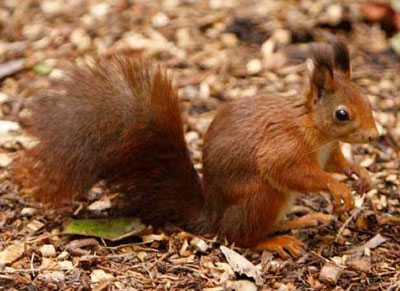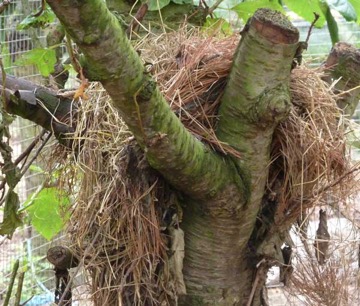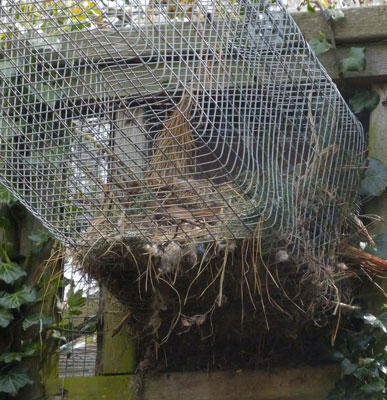There are many aspects to the Suffolk Owl Sanctuary’s mission statement - although primarily concerned with the treatment and rehabilitation of injured wild owls and other birds of prey, with educational outreach work and with raising the conservation status of owls, all of the sanctuary's additional interests and operations are similarly firmly rooted in ecological awareness.
For several years, our pretty Woodland Walk has provided a secluded and densely canopied retreat for a small colony of red squirrels. These extremely pretty and sensitive creatures are of particular interest to many of the sanctuary’s visitors and, although they can be elusive at times of heavy footfall, it is extremely satisfying to eventually catch a glimpse of these delicate and beautiful animals..
A pair of Red Squirrel 'kits' enjoy a snooze...
The red squirrel is one of the rarest of the U.K.'s woodland mammals. The single biggest factor in its decline in the 1970s and ‘80s was the increase of the American grey squirrel population.
The larger grey squirrel is more robust than the red, competes successfully for food resources and (as a carrier) has resistance to squirrel pox virus which is fatal for the red squirrel. Greys can feed more efficiently in broadleaved woodlands and can survive at densities of up to 8 per. hectare, compared to the reds’ survival density of 1 per. hectare.
In the wild, red squirrels also have to contend with predators - significantly the Goshawk and other birds of prey and pine martens. In the urban areas of the island of Jersey, domestic cats are a also threat to red squirrels feeding in gardens. It is for these reasons that when young have been successfully raised at the owl sanctuary, they are donated to a protected breeding programmes like the one operated on the Isle of Anglesey in Wales.
Tufty, one of our mature Red Squirrels, has been the
mainstay of our colony for many years
As an island, Anglesey offers a unique location from which grey squirrels can be excluded to the advancement of red colonies. The Red Squirrel Trust Wales is continually working to eradicate remaining grey squirrels and to improve habitat for native reds.
Red squirrels are solitary animals, only coming together to breed, although related family members will happily share a drey for warmth during cold winter months. Contrary to popular belief, they do not hibernate, though they do lay down stores of food to see them through lean times. They have a varied diet and enjoy seeds, buds, flowers, leaves and fruit. They are also known to take insects, birds eggs and fungi, which are collected and dried by wedging between tree branches.
Red squirrels build nests called dreys from sticks and moss placed high up in the branches of trees. The drey is often the first noticeable sign of red squirrels under a forest canopy - other signs to look out for are chewed pine cone cores (birds leave pecked, ragged remains), split hazel nut shells (dormice gnaw a hole and extract the kernel), cut tree shoots and scattered droppings.
Home sweet homes - our colony make dreys in the fork of
tree branches and in the sanctuary’s tree-top squirrel tunnels
On Anglesey, wooden nestboxes have also been used successfully to protect and monitor red squirrels whilst raising young. Between 2001 and 2008, 60 boxes were regularly used by released red squirrels. The boxes were provided filled with hay, to which the squirrels added their own “personalised” mix of dry moss, soft strips of bark, grass, foliage and twigs.
Red squirrels produce 3 or 4 young called kittens in the Spring and can sometimes have a second litter around July. Around 30% of kittens survive to adulthood and are weaned off their mother’s milk after 8 - 12 weeks, when they have developed a complete set of teeth!
The Suffolk Owl Sanctuary strives to offer visitors a unique opportunity to appreciate these sensitive and beautiful mammals at close quarters in spacious, naturalistic enclosures linked by treetop tunnels. The best way to approach their accommodation is….QUIETLY!! So, if it appears that nobody is at home when you visit their woodland quarters, our advice would be: Shhhh... do not disturb!!!




